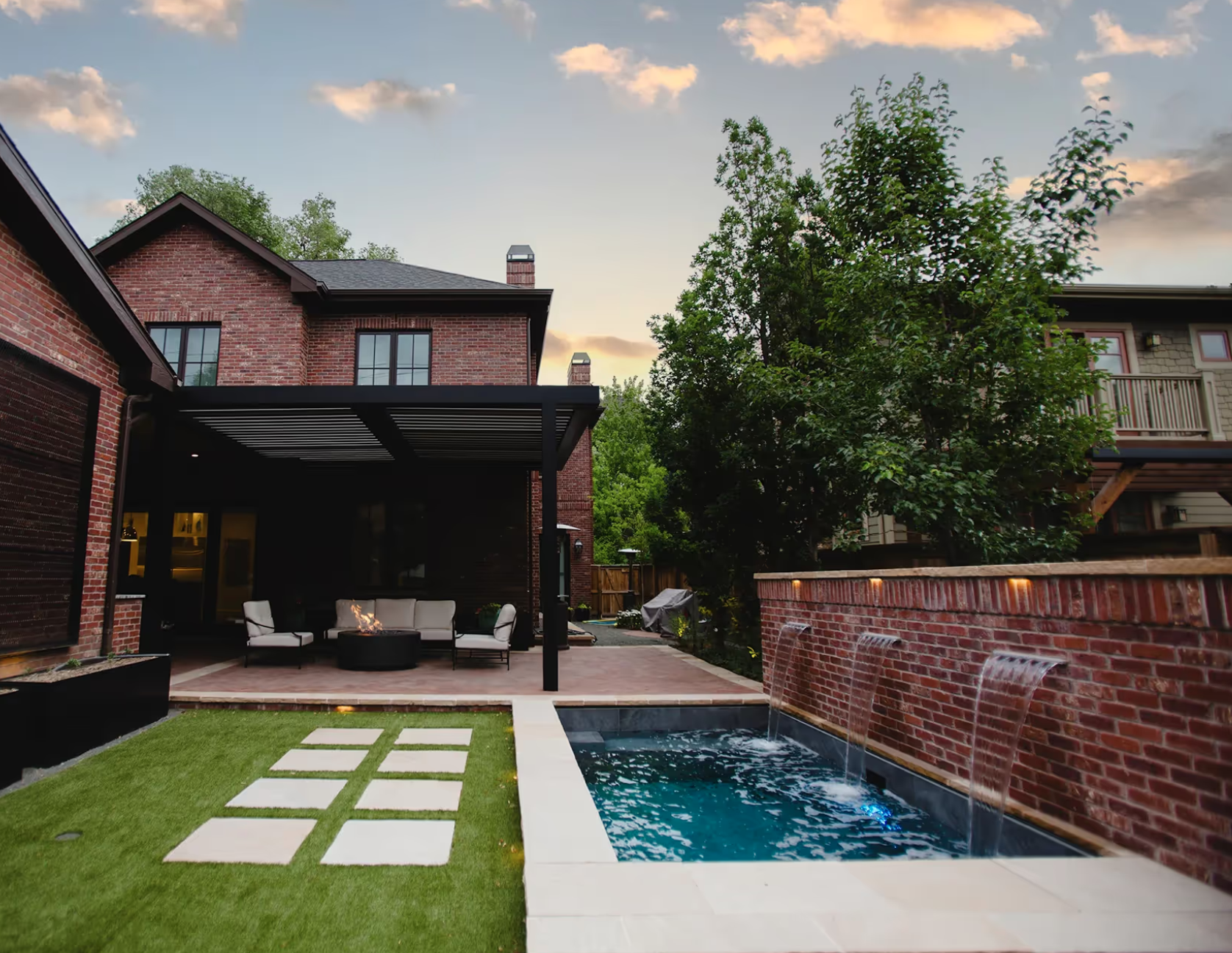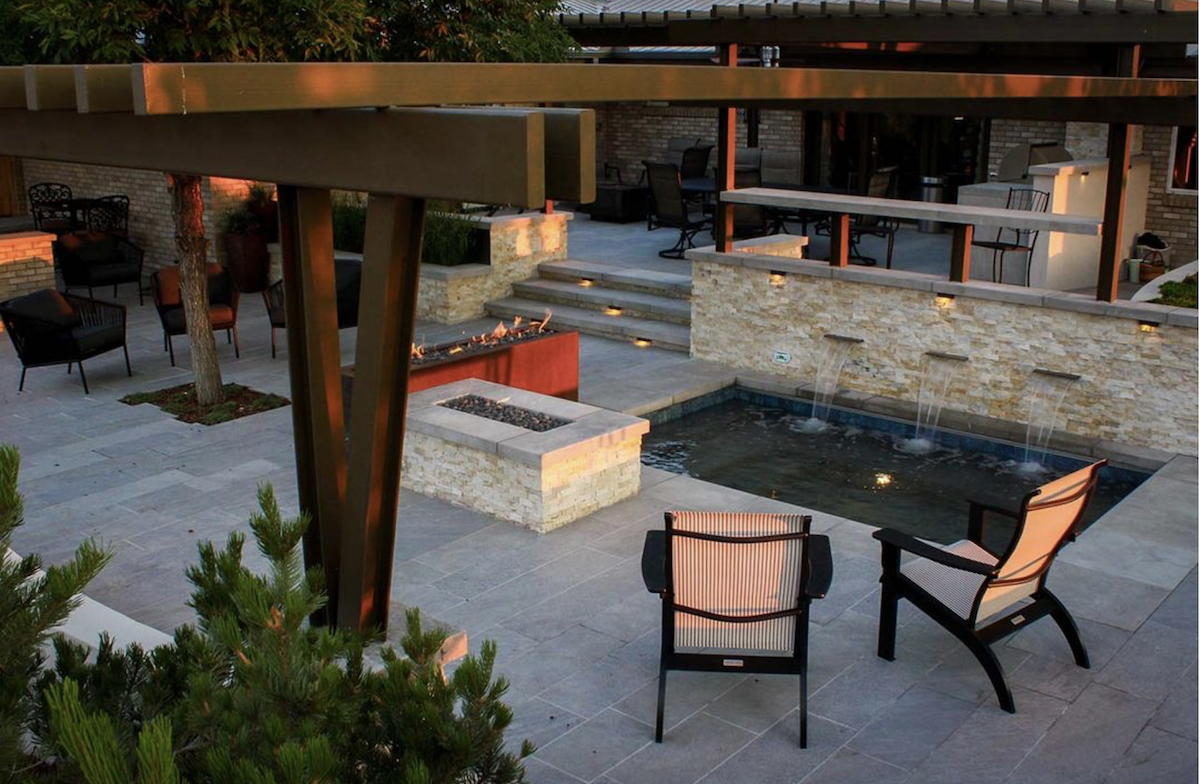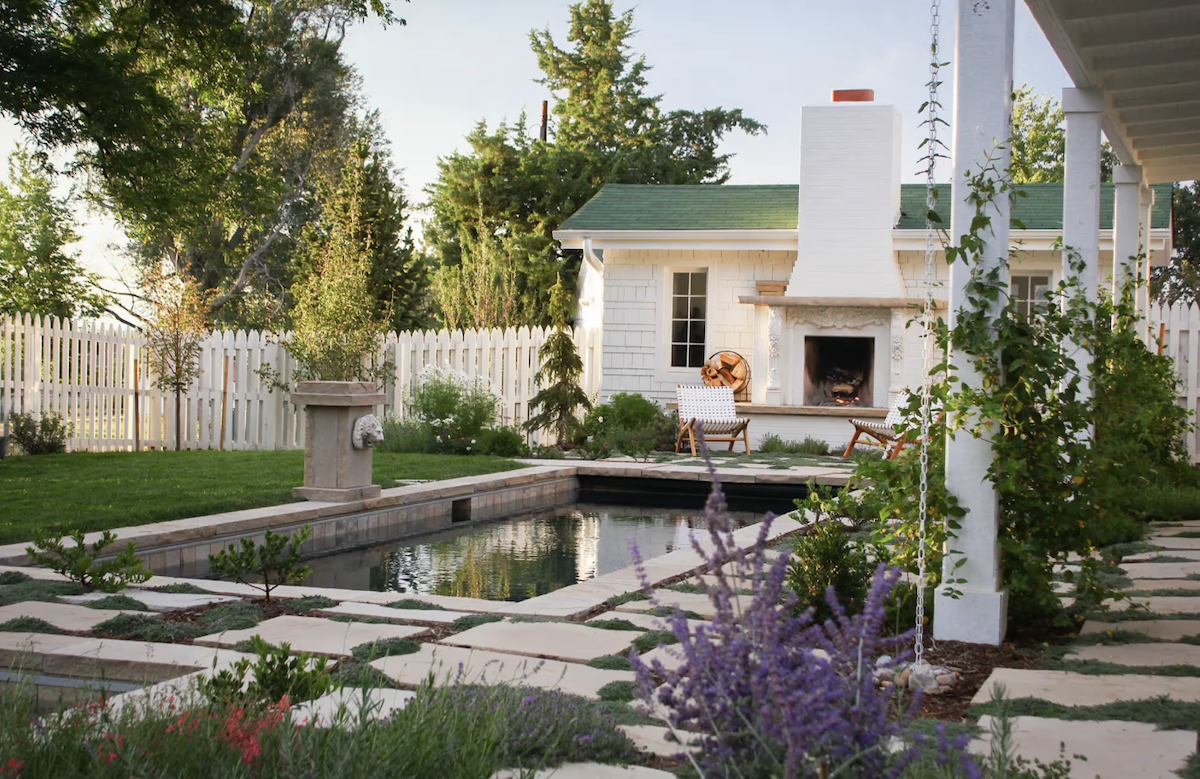With outdoor living continuing to take center stage in home design, more homeowners are transforming underutilized yards into functional, beautiful retreats. Leading the charge in 2025 are small backyard pools and natural pools—both of which prioritize aesthetic elegance, sustainability, and a strong connection to nature.
Whether you want a minimalist dipping pool, a rustic lagoon-style feature, or a chemical-free natural swimming pool, the possibilities for water-centric design have never been more inspiring. At Green Landscape Solutions, we help Colorado homeowners turn their outdoor visions into stunning, environmentally intelligent realities. This blog explores the most exciting trends in small pool and natural pool design and how you can incorporate these into your landscape.
1. Small Pools with Big Style

In many urban and suburban neighborhoods across Boulder County, space comes at a premium. Fortunately, small doesn’t mean compromising on luxury. Compact pools—often referred to as plunge pools, cocktail pools, or spools (spa + pool)—are having a major design moment in 2025.
Key features include:
- Minimal footprints (often 10’ x 6’ or smaller) that fit seamlessly into patios, courtyards, or side yards.
- Integrated seating or bench-style perimeters for socializing or lounging.
- Heated systems that make year-round use possible in Colorado’s varied climate.
- Automated covers and energy-efficient pumps for safety and sustainability.
These pools are ideal for homeowners who want a stylish, cooling feature without the size or maintenance of a traditional in-ground pool.
2. Natural Swimming Pools: A Chemical-Free Alternative
For eco-conscious homeowners, natural swimming pools (NSPs) offer a refreshing and beautiful alternative to traditional chlorine-based systems. These pools use biological filtration and aquatic plants to keep water clean, mimicking the processes found in lakes and ponds.
What makes a natural pool special:
- Two-zone system: one swimming area and one regeneration zone where plants and gravel filter the water.
- No harsh chemicals: perfect for sensitive skin, families, and people who prefer natural solutions.
- Wildlife-friendly: natural pools become ecosystems in themselves, supporting pollinators, frogs, and birds.
Natural pools aren’t just sustainable—they’re visually stunning. With design elements like stone edging, boardwalks, and aquatic gardens, these pools feel like a private spring in your backyard.
3. Eco-Friendly Pool Design Trends for 2025
As part of the broader sustainability and wellness trend, pool design is rapidly shifting toward resource-efficient materials and low-impact technology.
Key innovations include:
- Solar heating systems that extend the swim season while reducing energy use.
- Recycled or upcycled materials like composite decking and glass tile mosaics.
- Permeable pool decks that help with water drainage and groundwater replenishment.
- LED underwater lighting for ambience with reduced power consumption.
Whether you're going for a resort-style feel or a simple and serene vibe, integrating sustainable design from the ground up is no longer optional—it’s the standard for high-end, responsible landscaping.
4. Blending Pools Seamlessly Into Landscape Design
In 2025, the most successful small and natural pools are not standalone features—they’re integrated into the larger landscape as focal points, transitions, or immersive experiences.
Ways to blend pool and landscape:
- Use natural stone coping and decking to match other hardscape elements.
- Frame the pool with native or xeriscape plants that require little water and echo Colorado’s natural environment.
- Introduce multi-use zones like fire pits, pergolas, and outdoor kitchens near the pool area to enhance functionality and flow.
- Install waterfalls or zero-edge features that create sound and movement, even in compact designs.
At Green Landscape Solutions, we specialize in this kind of holistic thinking—designing outdoor environments where each feature supports and elevates the next.
5. Designing for Colorado’s Climate
Pools in Colorado come with their own design considerations. From unpredictable spring freezes to intense summer sun and wildfire risks, we work closely with our clients to choose materials and systems that hold up over time while minimizing environmental impact.
Smart strategies include:
- Thermal covers to retain heat and reduce water loss through evaporation.
- Windbreak plantings or privacy screens to buffer strong seasonal winds.
- Pool covers and safety fencing that meet local code and insurance requirements.
- Selecting firewise landscaping near pool zones for added resilience.
With proper planning and professional expertise, your pool can be a year-round asset—even when it's too cold to swim.
FAQ’s
1. Can I install a natural pool in a small yard?
Yes! Natural pools can be scaled down and designed with compact regeneration zones. You don't need acres of space—just smart design and plant selection.
2. Are natural swimming pools more expensive to build?
They can have a higher initial cost due to the dual-zoning and specialized filtration, but they offer long-term savings by eliminating chemical costs and reducing electricity usage.
3. How much maintenance do small pools require?
Smaller pools generally require less cleaning and fewer resources, especially when paired with modern filtration systems or smart technology.
4. Is a heated small pool practical in Colorado?
Absolutely. Many homeowners install small pools with efficient heating systems to enjoy them from spring through fall—even winter, in some cases.
5. Do natural pools attract bugs or algae?
Properly balanced natural pools do not harbor excess algae or pests. The regeneration zone is designed to maintain clean, balanced water through natural filtration and beneficial organisms.







